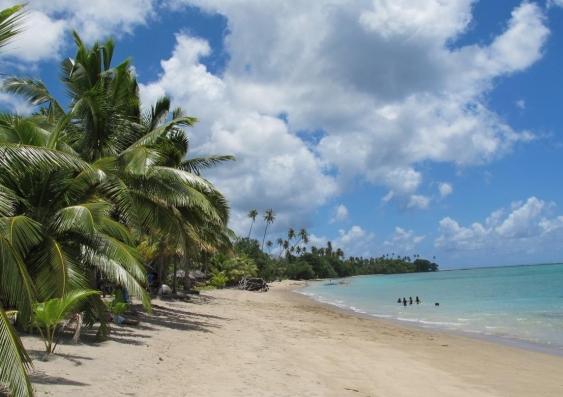The world has an obligation to help the Pacific Islands conserve their unique ecosystems, because they are a vital reservoir of biodiversity and important source of natural resources, according to UNSW scientist Richard Kingsford.
Professor Kingsford is director of the UNSW Centre for Ecosystem Science as well as President of the Society for Conservation Biology (Oceania), an international professional organisation dedicated to promoting the scientific study of factors affecting the maintenance, loss and restoration of biological diversity.
Society members, including more than 200 scientists from Australia, New Zealand and the Pacific Islands, are gathering in Fiji this week to discuss how to address the many challenges to the environment in the Pacific region.
“Pacific Island environments capture the conservation challenge for humanity: can we really look after these wonderful environments, which are rich in biodiversity, given humanity’s increasing footprint?” says Professor Kingsford.
The conference coincides with a Special Issue on the conservation of biodiversity on the Pacific Islands to be published in the journal Pacific Conservation Biology, which includes an editorial written by Professor Kingsford and Dr Stacy Jupiter, director of the Wildlife Conservation Society in Fiji.
“There is much for us to be proud about our progress in the Pacific on conservation, but there are still big challenges. We need to better incorporate people as part of the solution, even though we know humans are having the greatest impact on the environment,” says Dr Jupiter.
The meeting of the society will be held at the University of the South Pacific in Suva from Wednesday 9 July to Friday 11 July.
Pacific Islands are relatively small land areas with many human pressures, including climate change, that continue to seriously affect the sustainability of many animal and plant species on land and in freshwater and marine environments of the region.
It was on these islands that the world first understood the destructive impacts of invasive species on native species poorly equipped to withstand the onslaught. Historical estimates for Pacific island extinctions that were directly or indirectly due to humans are devastatingly high.
“We are becoming increasingly better informed about the state of our biodiversity in the Pacific Islands and generally the news is not great, but there are solutions. Some of these involve looking at past practices of Pacific societies who learned to effectively conserve their resources. We need to combine these lessons with more effective engagement by governments and our people throughout this the Pacific, working on long-term, locally-appropriate solutions,” says Dr Sangeeta Mangubhai, also of the Wildlife Conservation Society in Fiji.
Professor Kingsford says the Australian and New Zealand scientists will also give presentations at the conference on their countries, which face the same broad threats of habitat loss, invasive species, overharvesting, pollution and disease affecting biodiversity.
“Our countries are really just big islands and so we need to learn the lessons from the small Pacific Island nations,” he says.
“Also we are increasingly developing much of our land area and, in essence, creating natural islands within a mixture of urban, agricultural and mining developments.“If we are going to effectively sustain our environments, we need to learn how to control our impacts and protect our natural systems, which are providing us with the quality of life and services on which we ultimately depend.”
Media contacts:
Professor Richard Kingsford: Richard.kingsford@unsw.edu.auDr Stacy Jupiter: sjupiter@wcs.orgDr Sangeeta Mangubhai: smangubhai@wcs.org
See the Conference Programme
See the Special Issue on Pacific Conservation Biology – Editor Dr M. Calver
UNSW Science media officer: Deborah Smith, 9385 7307, 0478 492 060, deborah.smith@unsw.edu.au


